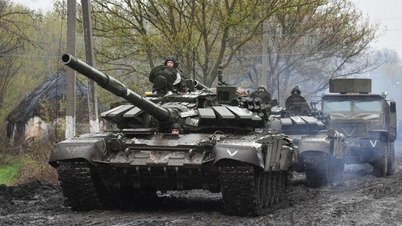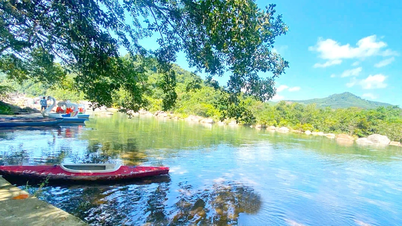A new study of unusual rocks found in Iceland is opening up new perspectives on the fall of the Roman Empire. Scientists believe that a "mini" ice age in the 6th century may have been the "last straw" that led to the final disintegration of this mighty empire.
Between 536 and 547 AD, three successive volcanic eruptions produced enough ash to block out the sun for about 200 to 300 years, causing the Earth's surface temperature to drop by several degrees.
Now, new evidence of this little ice age has been discovered in Iceland through the study of rocks carried by icebergs from Greenland to the west coast of Iceland.
“Significant environmental and climatic changes may have influenced migrations, especially in areas prone to crop failure and famine,” explains Christopher Spencer, an associate professor of geochemistry at Queen’s University in Kingston, Ontario, who led the study. “The combination of these pressures may have exacerbated social tensions that already existed during this period, contributing to the eventual disintegration of the empire.”
Researchers discovered unusual granite boulders in a beach layer dating to between 500 and 700 AD. After crushing the rocks and chemically analyzing the zircon crystals inside, they determined the origin of the boulders was Greenland, about 175 miles away as the crow flies.
"The movement of ice fragments from Greenland to Iceland is largely due to ice floes, where icebergs containing glacial debris are carried across the ocean by ocean currents," Spencer said. This suggests that the Little Ice Age was severe enough to produce large quantities of icebergs from Greenland.
However, historians note that the real story may be much more complicated. Shane Bobrycki, assistant professor of history at the University of Iowa, points out that this ice age occurred as the Western Roman Empire was in decline. The last Western Roman emperor, Romulus Augustulus, was deposed 60 years before this cold spell began.
It is possible that the Little Ice Age prevented Rome from recovering as it had done before. “Rome had faced near-fatal crises in the third century and had overcome them in the fourth,” says Bobrycki. “So the decisive role of the Late Antique Ice Age was to prevent Justinian from recovering.”
These findings are particularly relevant in the context of current climate change. According to Spencer, understanding the impact of the Little Ice Age on the Roman Empire could help us better understand how human-caused climate change will affect a globalized world./ .
Source: https://www.vietnamplus.vn/goc-nhin-moi-cua-nghien-cuu-khoa-hoc-chi-ra-de-che-la-ma-sup-do-do-tieu-bang-ha-post1035310.vnp


![[Photo] Journalists moved to tears at the Memorial Service for the soldiers who died in Gac Ma](https://vphoto.vietnam.vn/thumb/1200x675/vietnam/resource/IMAGE/2025/5/30/9454613a55c54c16bf8c0efa51883456)

![[Photo] National Conference "100 years of Vietnamese Revolutionary Press accompanying the glorious cause of the Party and the nation"](https://vphoto.vietnam.vn/thumb/1200x675/vietnam/resource/IMAGE/2025/5/30/1cf6cd5c8a934ebfa347028dcb08358c)

![[Photo] A delegation of 100 journalists from the Vietnam Journalists Association visits the soldiers and people of Truong Sa island district.](https://vphoto.vietnam.vn/thumb/1200x675/vietnam/resource/IMAGE/2025/5/30/0984a986227d4e988177f560d2e1563e)
![[Photo] General Secretary To Lam receives Chief of the Central Office of the Lao People's Revolutionary Party](https://vphoto.vietnam.vn/thumb/1200x675/vietnam/resource/IMAGE/2025/5/30/140435f4b39d4599a3d17975dfb444c5)

















































































Comment (0)